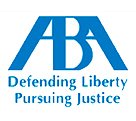Erb's Palsy

Erb’s palsy is a condition that causes injury to the arm, head and shoulder region, sometimes severing the nerves in the upper trunk. This condition can be caused by shoulder dystocia during traumatic or difficult childbirth. If the damage – which typically takes place during delivery – is minimal, the paralysis may repair and resolve with rehabilitative measures. Other times, the condition is a permanent one that leaves a child with impairment and requires rehabilitation or surgery.
If you are a parent of a child with Erb’s palsy, you are left to pick up the pieces and make sweeping changes to accommodate your child’s special needs. You might be eligible for compensation from those who harmed your child. Please call Stern Law, PLLC at (800) 462-5772 for a free evaluation of your birth injury case.
What is Erb’s palsy?
Erb’s palsy is a form of brachial plexus injury which is sustained to the upper brachial plexus, or network of nerves that control movement in the neck, shoulders and arms. The injuries range from minor muscle tears to the severing of a nerve root to the spinal cord. Damage to these nerves can lead to temporary or permanent injury in a newborn, the severity of which is dependent upon the underlying cause and amount of force used during birth.
The good news is that most infants who sustain injuries to the brachial plexus are able to recover both movement and feeling in the affected areas. Some children suffer permanent injury requiring more extensive Erb’s palsy treatment.
Generally, two out of 1,000 babies are born with this condition, which is typically caused by an infant’s neck being stretched to one side during an abnormal or difficult childbirth. In about 20 percent of cases involving Erb’s palsy, the injury to the newborn is so severe that his or her nerves are actually torn from their attachment points along the spine. Further, the infant may sustain nerve ruptures, leading to permanent paralysis in the arm and shoulder.
A detailed description of the types of nerve damage that are characteristic of Erb’s palsy are as follows:
- Eurapraxia – This is an injury where the nerves in the shoulder are overstretched, but not torn. These types of injuries are able to heal on their own, usually within three months after birth;
- Euroma – This is also a stretch-related injury. It may lead to damage to nerve fibers, resulting in scar tissue. In extreme cases, scar tissue can exert pressuring on healthy nerves, leading to potential disabilities. Some children are able to recover from this condition;
- Rupture – This occurs when stretching is so extreme that it causes tears in the nerve, which are unable to heal on their own. There are certain types of treatment that may improve certain symptoms associated with ruptures, including nerve and tendon transfers;
- Avulsion – This type of injury occurs when a nerve is actually torn from the spinal cord. Ruptures and avulsions are the most serious types of brachial plexus injuries, leading to paralysis and other serious complications in your newborn child.
What are the causes of Erb’s palsy?
There are a number of causes of Erb’s palsy, which are as follows:
- The use of excessive force during delivery – Sometimes doctors use too much force or inappropriate twisting motions to extract a child from the birth canal. This can cause serious birth injuries to a child;
- Improper usage of forceps or vacuum extractors – Forceps and vacuum extractors may not always be necessary to facilitate a vaginal birth. Sometimes doctors are not properly trained to correctly use these instruments, leading to serious and sometimes irreversible birth injuries in a newborn.
- Breech presentation – A child born feet or buttocks first may require more excessive force to be applied to facilitate delivery.
- Prolonged labor – This may occur for the following reasons:
- The baby is too large to pass through the birth canal;
- The baby is in an abnormal birthing position;
- The mother has an unusually small birth canal to allow for the vaginal delivery of her child;
- Overly weak contractions.
- Macrosomia – This is where a child is too large for the birth canal, which without proper intervention, can lead to Klumpke’s palsy and other serious birth injuries.;
- Shoulder dystocia – This is a situation that occurs when a baby’s shoulder gets caught underneath the mother’s pubic bone during labor, preventing the child from passing through the birth canal.
Risk factors associated with Erb’s palsy include:
- Mothers who have previously given birth to a child with shoulder dystocia;
- Mothers who gave birth to one or more children with macrosomia;
- Mothers with gestational diabetes;
- Mothers with smaller or usually shaped birth canals and pelvic regions;
- Mothers with a history of prolonged labor.
If your child suffered stretch-associated injuries during labor due to negligence on the part of a medical provider, our law firm can build a strong case on your behalf. Call Stern Law, PLLC at (800) 462-5772 for a free evaluation of your case and access to comprehensive resources to assist your child.







